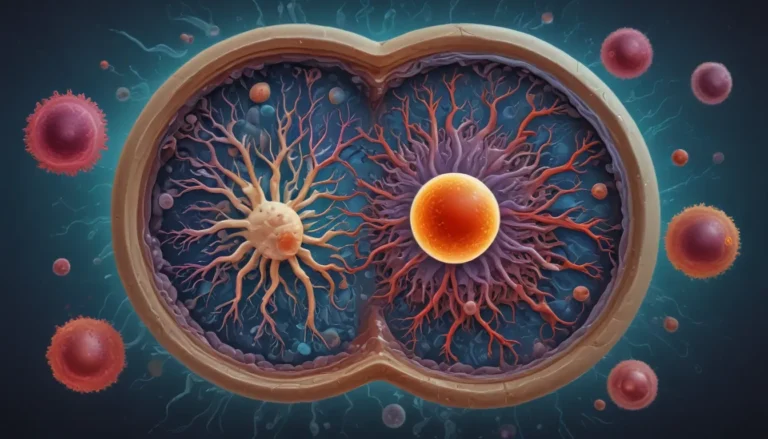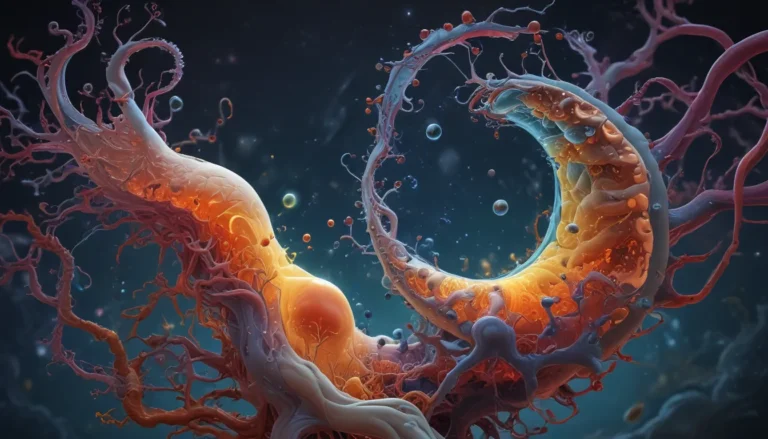A Note About Images: The images used in our articles are for illustration purposes only and may not exactly match the content. They are meant to engage readers, but the text should be relied upon for accurate information.
The Krebs Cycle, also known as the Citric Acid Cycle or the Tricarboxylic Acid Cycle, is a fundamental metabolic pathway that plays a crucial role in generating energy for cells. Named after its discoverer, Sir Hans Krebs, this cycle is an intricate series of chemical reactions that take place within the mitochondria of eukaryotic cells. In this article, we will delve into the fascinating world of the Krebs Cycle and uncover twelve intriguing facts about its significance, mechanism, and regulation. From its role in the breakdown of carbohydrates, fats, and proteins to its involvement in the production of ATP, the primary energy currency of cells, the Krebs Cycle is a vital component of cellular respiration.
The Krebs Cycle: Unveiling its Importance and Functionality
The Krebs Cycle, also known as the Citric Acid Cycle, is an essential part of cellular respiration in all aerobic organisms. It plays a central role in converting nutrients, such as carbohydrates, fats, and proteins, into energy-rich molecules called ATP. This cycle, discovered by Hans Krebs in 1937, sheds light on the complex mechanisms involved in energy production within cells. The Krebs Cycle occurs within the mitochondria, often referred to as the “powerhouses” of the cell, responsible for generating the majority of ATP required for cellular functions.
Intriguing Facts About the Krebs Cycle
-
High-Energy Molecules Production: During each round of the Krebs Cycle, multiple reactions occur, leading to the production of energy-rich molecules, including NADH, FADH2, and ATP. These molecules serve as crucial sources of energy for various biochemical processes in the body.
-
Oxidative Process: The Krebs Cycle is considered an oxidative process because it involves the removal of high-energy electrons from carbon compounds. These electrons are then transported to the electron transport chain, where they ultimately contribute to ATP synthesis.
-
Interconnected Pathways: The Krebs Cycle is interconnected with various metabolic pathways, including glycolysis and the electron transport chain. These pathways work together to efficiently extract energy from nutrients and ensure the proper functioning of cellular metabolism.
-
Regulation and Inhibition: The activity of certain enzymes within the Krebs Cycle is regulated by feedback inhibition. High levels of ATP and NADH can inhibit key enzymes, helping maintain metabolic balance and prevent energy wastage.
The Versatility and Importance of the Krebs Cycle
Besides ATP generation, the Krebs Cycle provides the precursors necessary for the biosynthesis of amino acids, nucleotides, and lipids. These building blocks are vital for cell growth and maintenance. The efficient functioning of the Krebs Cycle is crucial for athletes and individuals engaged in prolonged aerobic activities as it provides a continuous supply of ATP, allowing the muscles to sustain prolonged activity without fatigue.
FAQs About the Krebs Cycle
- What is the Krebs cycle?: The Krebs cycle is a series of chemical reactions that occur in the mitochondria of cells, converting glycolysis products into energy-rich molecules.
- Why is the Krebs cycle important?: It is essential for energy production and the synthesis of key biomolecules.
- How does the Krebs cycle work?: It begins with the conversion of pyruvate to acetyl-CoA, initiating a series of reactions that generate ATP and high-energy electrons.
- Where does the Krebs cycle take place?: It takes place in the mitochondria, specifically the mitochondrial matrix.
- Can the Krebs cycle be inhibited?: Yes, various factors like ATP levels can inhibit the cycle, disrupting cellular metabolism.
Conclusion: A Journey Through Cellular Energy Production
In conclusion, the Krebs cycle, also known as the Citric Acid Cycle, is a crucial process that takes place in the mitochondria of cells, essential for energy production and cellular metabolism. Understanding the intricacies of the Krebs cycle helps us appreciate the complexity of cellular metabolism and its role in sustaining life. By expanding our knowledge of this fundamental biological process, we gain a greater understanding of the intricate mechanisms that drive life itself.
Embark on a Journey of Discovery
Delve further into the fascinating world of the Krebs Cycle and unlock the secrets of cellular energy production. Explore the interconnected pathways that sustain life and dive deep into the essential role of the mitochondria as the powerhouses of the cell. Expand your knowledge of metabolism and its significance in maintaining the energy balance within living organisms. Let the wonders of biochemistry inspire you to explore the intricate processes that drive life and uncover the mysteries of the Krebs Cycle.
Your Exploration Awaits
Trust in our commitment to delivering reliable and engaging content as you embark on a journey through the captivating realm of cellular energy production. Each fact on our site is vetted by real users like you, ensuring a wealth of diverse insights and information. Dive into the complexities of the Krebs Cycle with confidence, knowing that our dedication to quality and authenticity will illuminate your path to discovery. Explore, learn, and uncover the wonders of the Krebs Cycle with us.






